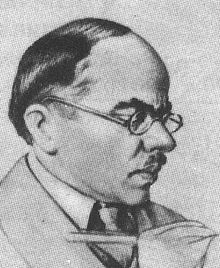
Vadym Heorhiiovych Meller was a Ukrainian and Soviet painter, avant-garde Cubist, Constructivist and Expressionist artist, theatrical designer, book illustrator, and architect. In 1925 he was awarded a gold medal for the scenic design of the Berezil Theatre in the International Exhibition of Modern Decorative and Industrial Arts in Paris.
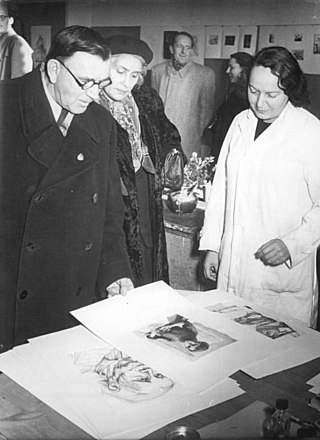
Sergey Vasilyevich Gerasimov was a Soviet and Russian painter.
Nikolai Suetin was a Russian Suprematist artist. He worked as a graphic artist, a designer, and a ceramics painter.

Sergey Vasilyevich Ivanov was a Russian genre and history painter, known for his social realism.

Sergey Vasilyevich Malyutin was a Russian painter of fine crafts, (scenic) designer, illustrator and architect; initially associated with the Arts and Crafts Movement. Most of his oil paintings are portraits. Outside of Russia, he is perhaps best known for designing the first set of Matryoshka dolls, created by Vasily Zvyozdochkin in 1890.

Alexei Vasilievich Mozhaev was a Soviet Russian painter, graphic artist, and art teacher, lived and worked in Leningrad, a member of the Saint Petersburg Union of Artists, regarded as a representative of the Leningrad school of painting, most famous for his portrait painting.
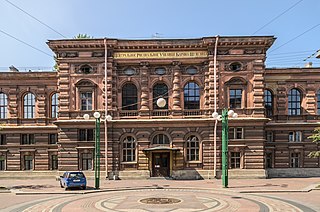
The Saint Petersburg Stieglitz State Academy of Art and Design is the oldest school of design in Russia. It occupies a parcel of land immediately to the east of the Summer Garden in Saint Petersburg.
Alexei Fedorovich Pakhomov was a Russian avant-garde painter. He was widely renowned as a master of lithography. Early in his career, he was a successful illustrator for children's books. His work during World War II earned him the State Stalin Prize. He later became a professor of art and was named a People's Artist of the USSR.

Soviet art is the visual art style produced after the Russian Revolution of 1917 and during the existence of the Soviet Union, until its collapse in 1991. The Russian Revolution led to an artistic and cultural shift within Russia and the Soviet Union as a whole, including a new focus on socialist realism in officially approved art.
The year 1936 was marked by many events that left an imprint on the history of Soviet and Russian fine arts.
Sergey Sangalov is a Russian contemporary artist. Born in Sukhumi in the former USSR and now capital of Abkhazia, he trained in Rostov and is an abstract painter.
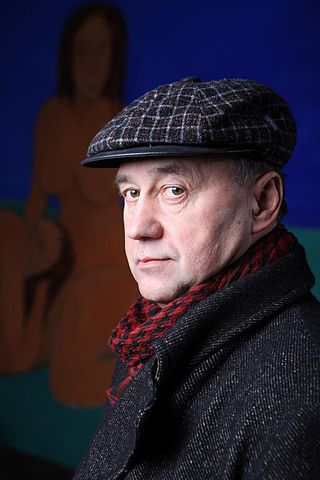
Sergey Evtuhov is a Russian painter, sculptor and author based in Vilnius, Lithuania. He has held over 30 personal exhibitions in Vilnius, Riga and Helsinki. His works are kept in private collections in the U.S., Canada, France, Russia, Lithuania and other countries.
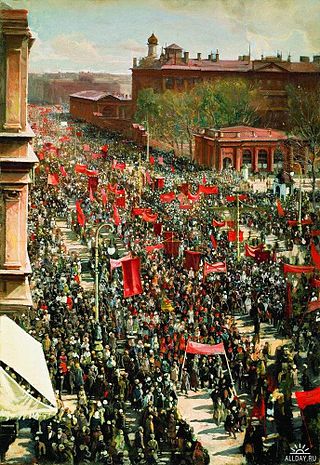
The fine art of Leningrad is an important component of Russian Soviet art—in the opinion of the art historians Vladimir Gusev and Vladimir Leniashin, "one of its most powerful currents". This widely used term embraces the creative lives and the achievements of several generations of Leningrad painters, sculptors, graphic artists and creators of decorative and applied art from 1917 to the early 1990s.
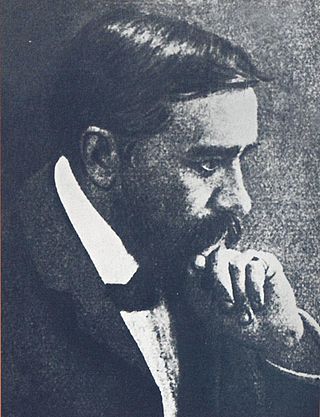
Sergey Sergeyevich Solomko was a Russian painter, watercolorist, illustrator and designer.
Harwood Steiger (1900–1980) and Sophie Steiger (unknown–1980) were American textile artists and printmakers. They are best known for their desert textile art of the 20th century.
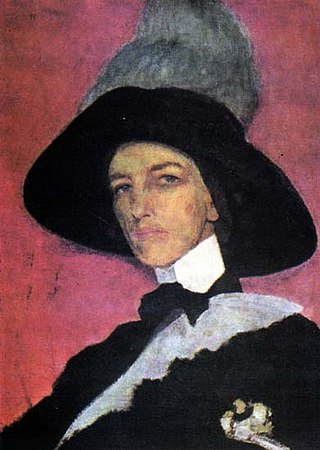
Elizaveta Sergeyevna Kruglikova was a Russian-Soviet painter, etcher, silhouettist and monotypist.

Sergey Mikhailovich Skubko was a Soviet painter. He lived and worked in Moscow and is a representative of the Moscow school of paintings.
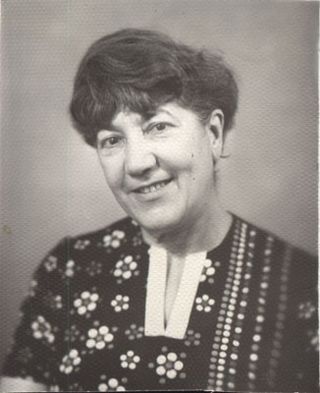
Lyudmila Skubko-Karpas was a Soviet painter who lived and worked in Moscow from 1924 on.
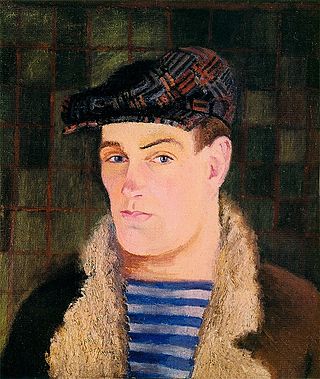
Sergey Ivanovich Markin — Moscow professional artist, painter and artist-decorator of the TRAM Theater. Master of urban landscape and narrative compositions conveying the spirit of the pre-war era. He was a member of the Pleiades of Artists of the 1920s-1930s. He worked in the Moscow Union of Artists (MOSSH). He died in battles near Moscow in the first year of the Great Patriotic War.
Lev Romanovich Britanishsky was a Soviet Russian painter and graphic artist.
